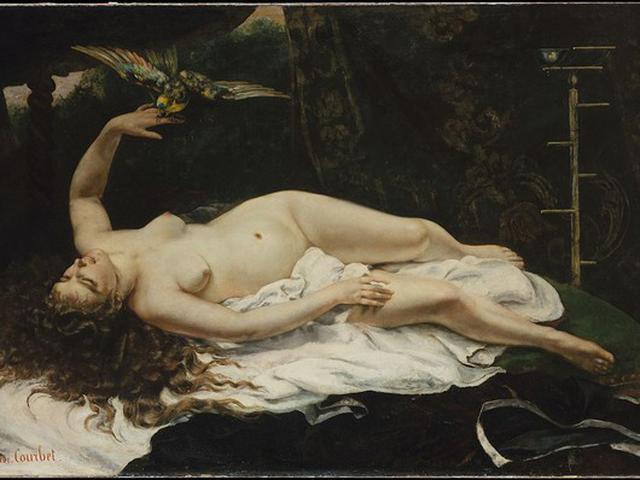Woman with a parrot

Courbet was no stranger to controversy. He was a man of strong political views who occasionally turned to activism, particularly during the revolutionary year of 1848 and the Commune in 1871. He was anti-intellectual, anticlerical and anti-establishment, and these socio-political views had an impact. about the topic he chose to represent. All of this earned him a reputation as a provocative firebrand, but he nevertheless exhibited regularly at the Salon, protected by powerful clients; in fact, at the Salon of 1849, he was awarded a gold medal.
Before painting Woman with Parrot in 1866, Courbet had created an even more scandalous painting to test how crazy he could get before the hyperconservative Salon deemed it vulgar or tasteless or what the snooty 19th century academics openly called it. nudity at the moment.
Critics found much to criticize when confronted by Woman with a Parrot at the Salon of 1866, complaining about the sitter's ostentatiousness and the artist's lack of taste. The main problem, however, was the blatant sexuality of the painting in which a young woman can be seen lying on a sofa, her legs slightly extended, the braids of her lush hair spread against a messy white sheet, part of which has, perhaps fortuitously, become entwined around the top of his leg. Most of the sheet has become a tangled pile leading to questions in the viewer's mind as to how this could have happened. The young woman is led astray by the parrot of the same name, whose outstretched wings, revealing its striking plumage, echo the locks of her hair.
Courbet was the main exponent of realism in French painting of the 19th century. His work contrasts with the classicism of Jean-Auguste-Dominique Ingres and the romanticism of Eugène Delacroix.
Courbet was born in Ornans in eastern France and received his first training in Besançon. In Paris, from 1840, he especially studied Dutch and Venetian paintings at the Louvre. He exhibited at the Salon in 1844, but public and official favor abandoned him later. His mature works often deal with gender themes on the large scale of history painting, as in the ambitious painting in his studio. After he was rejected by the World's Fair in 1855, he held a solo exhibition that established his position as a Realist.
© Tourblink